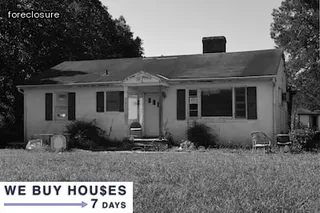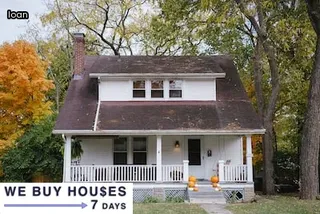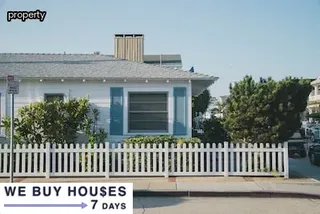The North Dakota foreclosure process is complex, but understanding the steps involved can help you protect your rights as a homeowner. The mortgage loan process in North Dakota begins with a loan application and prequalification.
After this step, the lender reviews the application and determines whether to approve or deny the loan. If approved, the borrower must then provide proof of income, employment history, credit score and other financial documents to secure the loan.
Once these documents have been provided, the lender issues a commitment letter outlining all terms of the loan such as interest rate and length of repayment schedule. The next step is closing on the property where all legal paperwork is signed and funds are exchanged between buyer and seller.
Once this has been completed, homeowners have up to three months to make their first payment or face foreclosure proceedings from their lender. It's important for homeowners to understand their rights during this process so they can protect their assets and seek assistance if needed.

Navigating the North Dakota foreclosure process for your home can be a complicated and confusing journey. Knowing the laws of North Dakota will help you understand the foreclosure process and make it easier to manage.
The foreclosure process in North Dakota is initiated by a Notice of Default being filed with the court, which officially declares that you are behind on mortgage payments. After this notice is filed, a homeowner has 60 days to rectify the situation or an auction will be held on the property.
It is important to understand that this time period cannot be extended, so homeowners should take action as soon as possible. If you are unable to find a solution during this time period and an auction is held, any proceeds from the sale of your home go towards paying off your debt before any money is returned to you.
In order to protect yourself from further legal action, it is important to contact an attorney who can help you navigate the foreclosure process in North Dakota. They can provide advice on how best to proceed and assist in negotiating with lenders or creditors.
Knowing these laws will enable homeowners to approach the foreclosure process in North Dakota with confidence and peace of mind, allowing them to focus on resolving their financial issues.
When it comes to navigating the North Dakota foreclosure process for your home, understanding the difference between preforeclosure and foreclosure is key. Preforeclosure is the period of time between when a homeowner has missed payments and when the foreclosure process begins.
During preforeclosure, homeowners may be able to work with their lender to get caught up on their mortgage payments or arrange an alternative payment option such as a loan modification. Homeowners can also take advantage of programs like forbearance or repayment plans during this period to help avoid foreclosure.
Once preforeclosure ends, the lender will typically start the foreclosure process by filing a notice of default with the county recorder's office. This is followed by a sale date being set and published in a legal notice in order for buyers to bid on the property at auction.
If no buyer bids on the property, then ownership reverts back to the lender who can then sell it as Real Estate Owned (REO). Knowing these key differences between preforeclosure and foreclosure can make all the difference for homeowners looking to navigate North Dakota’s unique foreclosure process.

Navigating the North Dakota foreclosure process for your home is a complex endeavor, but understanding the steps involved can help you make informed decisions. The first step of a North Dakota foreclosure sale is filing a complaint with the court.
This initiates legal proceedings and begins the foreclosure process. Once the complaint is filed, an order of sale must be issued.
This allows the lender to advertise the property for sale in local newspapers. After this point, bidders can submit offers on the property at a public auction or private sale.
If no bids are received or no satisfactory offer is made, the lender may take ownership of the property through a deed in lieu of foreclosure agreement. Once all parties have made payment arrangements, including any fees and costs associated with foreclosure proceedings, title to the property will transfer to the buyer at closing.
When faced with the possibility of foreclosure, North Dakota homeowners have alternatives to explore. Refinancing is a good first step and can help reduce mortgage payments or extend loan terms.
Loan modification is another option that can change the terms of the loan, allowing homeowners to keep their home and make payments over time. Selling may be an option as well, allowing homeowners to receive money from their home sale which they can use to pay off their mortgage debt.
Short sales are another choice, where a lender agrees to accept less than what is owed on the loan in exchange for releasing the homeowner from any additional legally binding obligations. Finally, deed-in-lieu of foreclosure allows the homeowner to return their property title directly to the lender in exchange for being released from any further legal obligations.
Exploring alternatives to foreclosure in North Dakota is essential for anyone facing potential foreclosure on their home.

When navigating the North Dakota foreclosure process for a home, it is essential to understand the implications of a deficiency judgment. A deficiency judgment occurs when a foreclosed property does not sell for enough to cover the mortgage debt and costs associated with the foreclosure.
When this happens, the lender may try to recover any remaining balance from the homeowner by filing a lawsuit against them. This can have serious consequences as it could result in wage garnishment or even bankruptcy.
Furthermore, if a deficiency judgment is issued in North Dakota, it can stay on an individual's credit report for up to seven years, making it difficult to secure financing and other financial services. It is important to be aware of these potential ramifications before beginning the foreclosure process in order to minimize future financial hardship.
There are many resources available to North Dakota homeowners facing foreclosure and seeking assistance. The North Dakota Housing Finance Agency (NDHFA) provides counseling services and offers options such as loan modifications, refinancing, or repayment plans.
Furthermore, the agency provides cash grants and legal aid to qualifying homeowners who are struggling with their mortgage payments. Additionally, the NDHFA has a Foreclosure Prevention Hotline that connects individuals to housing counselors.
Local non-profit organizations like Community Action Partners also provide resources, including workshops and homebuyer education classes. Furthermore, they offer mediation services between lenders and borrowers to help reach an agreement on payment terms.
In addition to these statewide resources, many banks have their own programs for assisting homeowners in need of financial help. Although navigating the foreclosure process can be difficult, there is assistance available for those in need of guidance and support.

Failing to make mortgage payments can have serious consequences for homeowners in North Dakota. Foreclosure is the most obvious potential outcome of missing a payment, and it can be a stressful and overwhelming process.
Understanding how foreclosure works in the state of North Dakota and what steps to take if you are facing it is key to navigating the situation successfully. Creditors may allow homeowners who are late on payments to catch up through loan modifications or repayment plans, but if they do not, the foreclosure process may begin.
In North Dakota, foreclosures are typically conducted through non-judicial proceedings which means that lenders do not have to appear in court, allowing them to move quickly with the process. This makes it important for homeowners to act fast if they know they’re at risk for not making their payments.
Homeowners should be aware that foreclosure will severely damage their credit score and could even result in tax liability if the lender cancels any remaining debt after selling the property. The best way for homeowners to avoid these consequences is to contact their lender as soon as possible if they fear they won’t be able to make payments and work out an alternative solution before foreclosure begins.
A Breach Letter is an important document to consider when navigating the North Dakota Foreclosure Process for your home. The breach letter is a formal notification sent by your lender or loan servicer to inform you of their intent to foreclose on your property if you do not make payments on the loan.
It also outlines steps that must be taken in order to prevent foreclosure, such as providing proof of income and/or evidence of a payment plan. The Breach Letter should also include details about how long you have to cure the default and what will happen if you fail to do so.
Receiving a Breach Letter is a serious matter and it is important to take immediate action in order to avoid foreclosure. While it can be overwhelming, there are many resources available to help homeowners understand the foreclosure process and take steps towards curing the default.

In North Dakota, homeowners facing foreclosure should be familiar with the legal timeline for the process. A lender must provide notice of default to the homeowner if a payment is more than thirty days late.
The homeowner then has eighteen days to cure the default by making up all past due payments and fees. If that does not happen, the lender can then file a foreclosure complaint with the court after thirty-five days.
Once filed, the court will set a hearing date no less than thirty days from when the complaint was filed. The homeowner will receive notice of this hearing at least twenty-one days in advance.
At this hearing, either an agreement between lender and borrower may be reached or a judgment of foreclosure will be entered by the court; depending on whether an agreement is reached or not, possession of the home may occur within ninety days or up to two years after entry of judgment. It's important for homeowners in North Dakota to understand these timelines so they can make informed decisions about their future during this stressful time.
If you receive a preforeclosure notice in North Dakota, it's important to take action right away. Consult with an attorney who is familiar with foreclosure law and understand the various options available to you.
In most cases, you may be able to stop the foreclosure process by filing for bankruptcy, negotiating a loan modification or refinancing your loan. You can also look into a deed in lieu of foreclosure or a short sale, which will allow you to pay less than the amount owed on your mortgage.
It is important to note that if the lender does not offer an acceptable solution, then the foreclosure process will proceed and your home will eventually be sold at auction. If this happens, it is essential that you remain in communication with your lender so that they can provide information about how much money is due and when.
Taking these steps immediately can help you protect yourself from any further losses related to North Dakota foreclosures.

North Dakota has clear and distinct foreclosure procedures that must be followed to ensure the process is completed legally. It is important to understand what these rules and regulations are before attempting to navigate the state's foreclosure process, as failure to do so can result in major financial implications.
Before initiating the process, it's important to check with a local attorney who specializes in real estate law, as they will be able to provide the most up-to-date information regarding foreclosures in North Dakota. Additionally, many of the state’s counties require that all notices of sale or foreclosure be published in local newspapers for a certain amount of time prior to sale.
Property owners should also be aware that if their property is sold at auction, any remaining balance on their mortgage may become due immediately. Understanding these rules and regulations will help property owners navigate the North Dakota foreclosure process for their home more effectively, ensuring a smooth and successful transaction.
Navigating the North Dakota foreclosure process can be daunting, especially when you are trying to reinstate your mortgage before the sale begins. Your best bet is to contact the lender as soon as possible and discuss your options with them.
You may be able to work out a repayment plan that extends the delinquency period while allowing you to make smaller payments over time. It is important to provide details of your financial situation, such as income and expenses, so the lender can assess whether or not this is a viable option for you.
If this does not work out, there are other ways to get back on track with your payments, such as refinancing your loan or obtaining a loan modification. Refinancing allows you to take out a new loan with more favorable terms than your existing loan, often reducing monthly payments and interest rates.
Loan modifications also allow for lower monthly payments but require negotiation between the borrower and lender in order to come up with an agreement that works for both parties. Regardless of which route you choose, it is important to stay in communication with your lender and review all documents carefully before signing anything.

Homeowners who have gone through the foreclosure process in North Dakota are given a redemption period in order to reclaim their property. During this time, homeowners have specific rights that they must be aware of in order to successfully navigate the redemption period and reclaim their home.
For instance, during the redemption period, homeowners are not subject to eviction or other attempts by lenders to enter the premises without cause. Homeowners also retain certain rights regarding any possessions left behind in their former home.
Additionally, there may be additional laws surrounding the foreclosure process that can affect a homeowner's rights during this time. It is important for homeowners to understand what rights they have during the North Dakota redemption period in order to protect themselves and ensure a successful outcome when trying to reclaim their property.
When considering whether to let your house go into foreclosure in North Dakota, it is important to weigh the pros and cons. On one hand, allowing your home to enter foreclosure may prevent further financial hardship or damage to your credit score.
It can also be a way of avoiding expensive fees associated with short sales and other methods of selling the property. On the other hand, foreclosure proceedings can take months or even years to complete, resulting in additional expenses such as lawyer fees and court costs.
Furthermore, any money that you owe on the mortgage may not be forgiven by the lender and you could end up owing them more than you originally borrowed. Ultimately, when deciding whether or not to pursue a foreclosure process for your home in North Dakota, it is essential to consider all of these factors carefully.

The financial loss of a home going into foreclosure can be devastating, but there are ways to mitigate its long-term effects. One of the first steps is to understand the North Dakota foreclosure process and your rights as a homeowner.
Knowing the timeline for each step, from the initial default notice to the final sale of your property, can help you prepare for what is ahead and may even give you time to explore options such as loan modification or a short sale. It's also important to familiarize yourself with state laws, as they may affect how much time you have before a foreclosure is finalized.
Additionally, it's helpful to create a budget and set up an emergency fund so that you don't find yourself in another financial bind after the foreclosure process ends. Finally, seek out resources such as counseling services or government programs that can provide additional support during this difficult time.
With good preparation and guidance, you will be better equipped to survive financial loss after your home goes into foreclosure.
After a foreclosure event, it can be difficult to rebuild credit and move forward financially. However, by understanding the North Dakota foreclosure process and taking steps to re-establish creditworthiness, individuals can start to rebuild their credit score and improve their financial future.
One of the first steps for rebuilding credit after a foreclosure is to review credit reports for accuracy, as errors in reporting can have a negative effect on scores. Additionally, it may be beneficial to pay off any outstanding debts and begin making payments on time.
Secured credit cards are another helpful tool for rebuilding credit since they require a deposit but report usage to the major credit bureaus. Lastly, regularly checking in with the three major credit bureaus is important for monitoring progress and maintaining an accurate picture of one's current financial situation.
Many people in North Dakota face the difficult decision of allowing their home to go into foreclosure. Foreclosure is an intimidating process for any homeowner, and it can be difficult to understand why someone would choose this as an option.
In reality, there are a variety of reasons why someone might opt for foreclosure: financial hardship, medical bills, job loss, or even divorce. Financial hardship can be caused by unexpected expenses such as medical bills or unemployment due to job loss.
Divorce is another common reason why a homeowner may choose to let their house go into foreclosure. During a divorce proceeding, couples may not have the necessary funds to keep up with the mortgage payments and will ultimately decide to part ways and forego their home loan obligations.
Additionally, some homeowners simply cannot afford their monthly mortgage payments because of rising interest rates or other factors that affect their ability to make timely payments. Regardless of the reason, navigating through the North Dakota foreclosure process can be stressful and daunting; however, understanding why people allow their homes to go into foreclosure can help them better prepare for the legal proceedings ahead.

North Dakota has a unique foreclosure process, and it is important to understand the statute that applies to foreclosure in the state. The North Dakota Century Code covers the law of real property foreclosures, which states that before foreclosure can take place, the lender must obtain a judgment in court.
This judgment must indicate that the borrower has not paid their mortgage debt on time and indicates how much they owe. After obtaining this judgment, the lender must publish a notice of sale in two different newspapers for at least four weeks.
The notice of sale must include information about the amount owed and details about when and where the auction will be held. Finally, if no buyer is found through an auction or other means, then a deed of sale is issued to transfer title from the homeowner to the lender.
This process offers homeowners certain forms of protection during foreclosure proceedings such as providing them with time to find alternate solutions or file for bankruptcy.
The North Dakota foreclosure process has a unique redemption period that homeowners should be aware of. During the redemption period, homeowners may reclaim their home if they pay all delinquent payments and other costs associated with the foreclosure process.
The length of the redemption period varies depending on whether the homeowner is a military veteran or not; veterans have up to one year to redeem their property, while non-veterans have six months. Homeowners should also be aware that during this time, they still must keep up with their mortgage payments and any other fees due on the property.
It is important for homeowners to understand the redemption period so that they can plan ahead and make sure they are able to reclaim their home if necessary.
North Dakota is a judicial foreclosure state, which means that the lender must obtain permission from a court in order to foreclose on a home. The process of navigating North Dakota's foreclosure laws can vary depending on the circumstances surrounding an individual case, but typically begins when the lender files a complaint with the court.
After filing the complaint, the lender must then provide notice to the homeowner so they have an opportunity to respond and defend their rights. Once all parties have had their chance to present their case, the court will make a final decision as to whether or not foreclosure is appropriate for a particular situation.
Ultimately, it is important for homeowners in North Dakota to understand their rights and responsibilities under state foreclosure law before taking any action to avoid potential complications during this difficult process.
A: If you let your house go into foreclosure in North Dakota, the mortgage lender must file a complaint in court seeking a judgment of foreclosure. The court will then issue an Order of Foreclosure, which gives notice to all parties involved and sets a date for a hearing. At the hearing, the court will consider evidence presented by both the lender and borrower. Depending on the outcome of the hearing, either party may be required to take additional action or may appeal the decision. It is highly recommended that both parties seek guidance from experienced attorneys throughout this process.